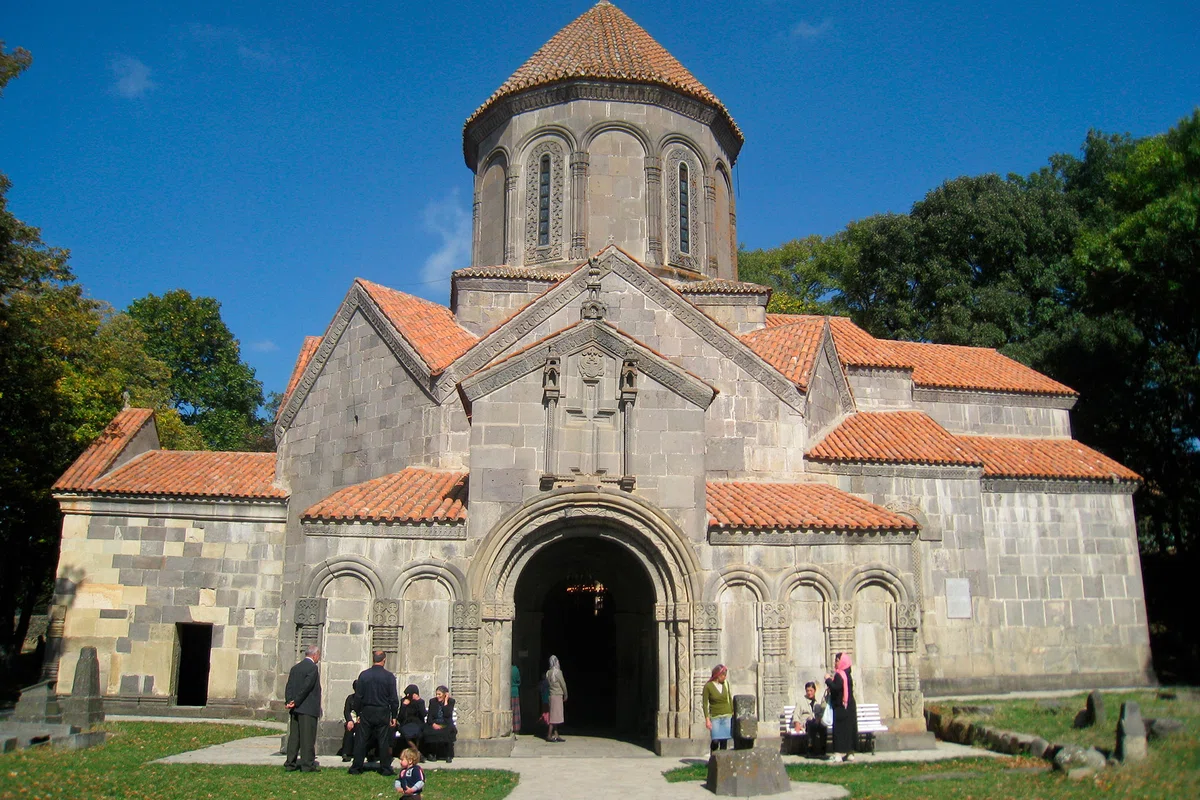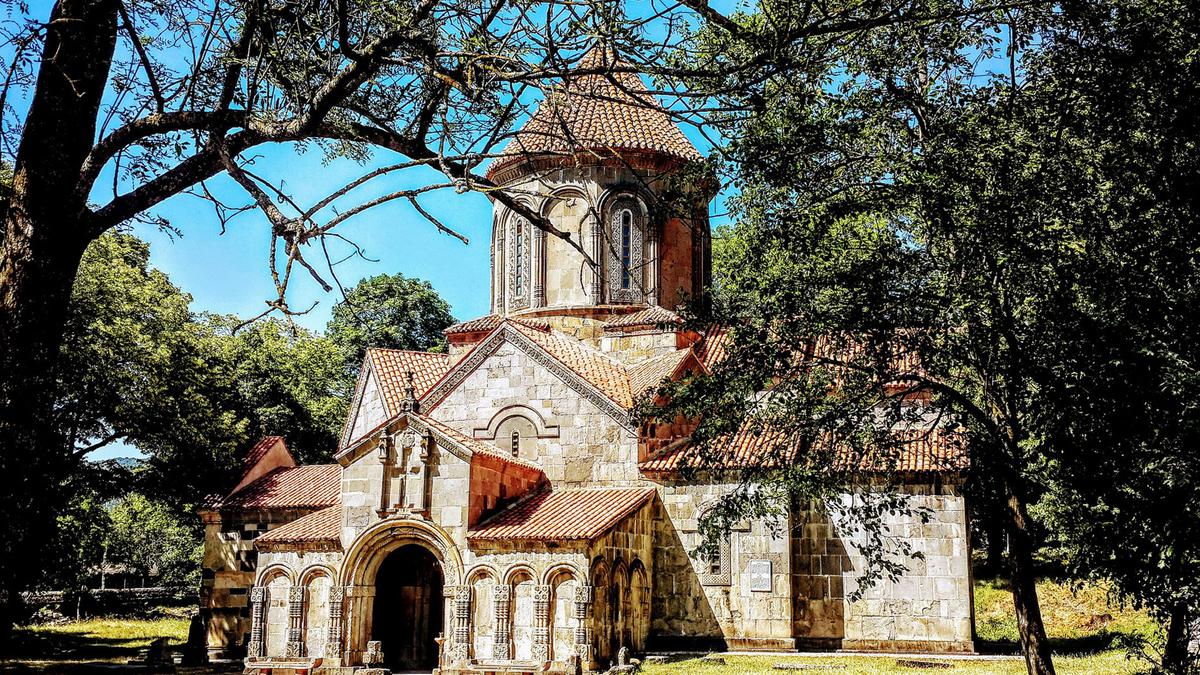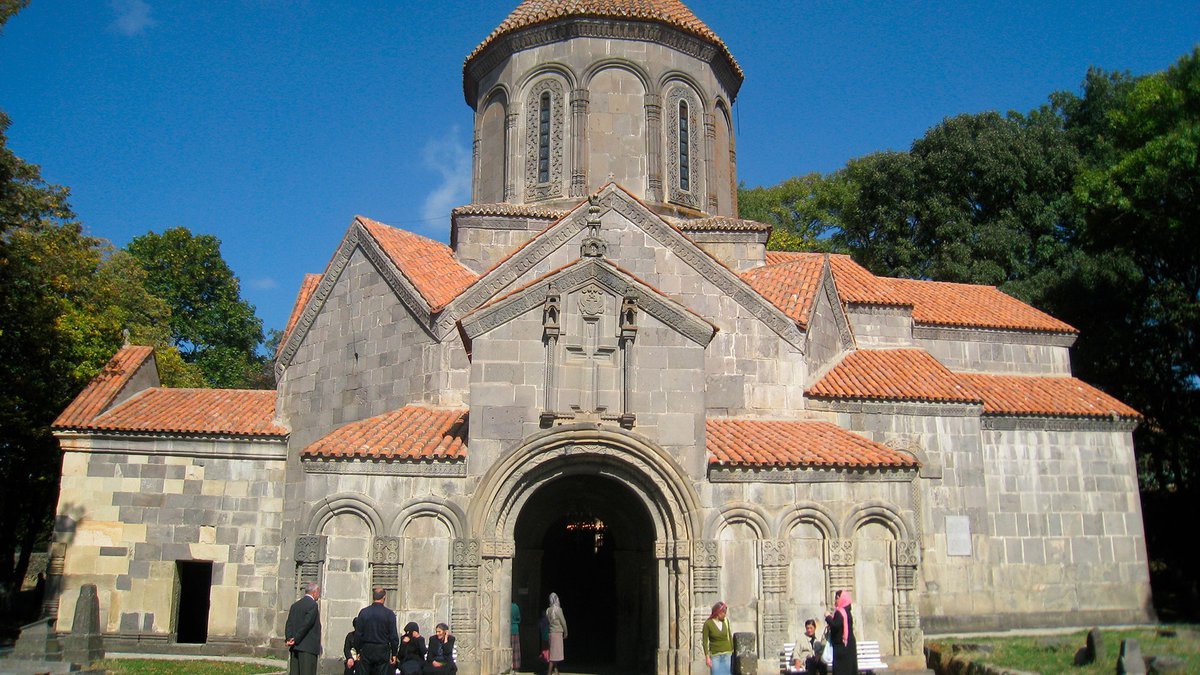
One of the oldest Orthodox Churches of Manglisi Sioni is located in the most beautiful places of Georgia Kvemo Kartli. The building is built of stone. For the first time, Manglisi Sioni is mentioned in documents of the 5th century.
The history of Georgian temples is akin to the history of military fortresses and castles of Georgia. One of the sights of Georgia, the Manglisi Sioni Temple was first attacked in the 7th century. Hercules, the Emperor of Byzantium ordered the destruction of the temple and looted all the artifacts. In the 11th century
Manglisi Sioni is an active Orthodox church in Georgia. It is located in the picturesque place of Kvemo Kartli, where the most beautiful places of Georgia are opened, near Daba Manglisi, Tetritskaro.
The first mention of the temple dates back to 330 years. It is a protected architectural monument of Georgia. He became famous due to a relic kept in his walls at one time - a particle of the Life-Giving Cross, namely, a stand on which Christ leaned with his feet at the moment of crucifixion. An excellent representative of the Christian attraction of Georgia.
History.
Historical sources claim that the first stone cathedral was created here in the 30s of the IV century, at a time when Christianity was made the official religion of Georgia. According to Leonti Mroveli, Constantine the Great, at the request of the King of the Mirians, who had converted to Christianity at that time, sent Bishop John with sacred artifacts and treasures for the construction of Christian religious buildings in Georgia. On the way, he stopped in Manglisi, which at that time was one of the developed cities of the Kvemo Kartli region, and began to erect a temple where one of the main relics of the Christian faith was left - a particle of the Holy Cross of Christ, which greatly upset the tsar, who believed that all such strong relics should be in the capital.
In the VII century, Manglisi was almost completely destroyed, and religious monuments and objects were looted, and the Byzantine Emperor Hercules was to blame for that. Until the beginning of the XI chronicle is silent about the history of the temple. At the beginning of the XI century, there is evidence that the temple was restored, namely, the dome was changed, the stone was decorated on the outside, and the inside was painted. In 1441, Tsar Alexander I mentioned it under a new name - the Cathedral of the Virgin Mary.
During the Caucasian War, it was again destroyed and looted, and after that it was abandoned for a long time and served as a shelter from the weather for local residents. In 1850, due to the arrival of the metropolitan, who was interested in restoring the temples, Manglisi began to be restored. Intermittent restoration continued until 1862, and although it was formally restored, many objects of religious and cultural significance were lost forever. The temple underwent the last renovation in the period from 1953 to 1956, during which the roof was recreated again, frescoes were restored, and some of them were taken to the museum.

Architecture.
From an architectural point of view, the temple is a four-petalled structure with a dome on an octagonal drum in which narrow windows are pierced for natural light. It has two entrances pierced in the asp - the south one is asymmetrical towards the western wall and the west one. In its current state, there is also something to see in Georgia - small fragments of antiquity have been preserved. The original painting is present only on the dome. In addition to the cathedral, there is a separate bell tower, a cemetery and the remains of outbuildings and fencing on the territory.













32 comments
Log in to leave a comment
Подставка Иисуса Христа! Это ведь единственная в своём роде историческая и религиозная ценность. Восхительно! Я в полном предвкушении, надеюсь, как можно скорее мне удастся съездить к этому храму.